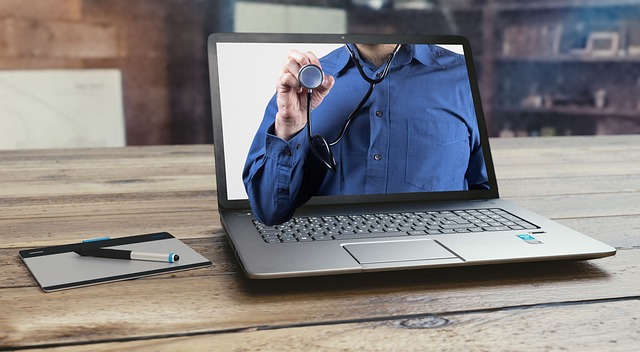Telemedicine for primary care has revolutionized how healthcare services are delivered, particularly in addiction treatment. One of the most significant applications of telemedicine in addiction treatment is in the delivery of Suboxone treatment.
Suboxone, a medication used to treat opioid addiction, has been shown to be effective in helping individuals achieve and maintain recovery.
However, access to Suboxone treatment has been limited due to barriers such as geographic location, cost, and stigma. Telemedicine has the potential to overcome many of these barriers and improve access to Suboxone treatment.
Confidant Health has treatment plans and medications like Suboxone to help patients make informed choices. In this article, we will explore the role of telemedicine in accessing Suboxone treatment. Download the app, and we’ll help you get started.
What is Telemedicine?
Telemedicine is a form of healthcare delivery that allows patients to receive medical care remotely using video conferencing, remote monitoring, and mobile health apps. This means that patients can access medical care without having to physically visit a doctor’s office or hospital, making it a convenient and cost-effective option for individuals with mobility issues or living in remote areas.
Telemedicine and the emergence of online suboxone doctors have become increasingly popular in recent years, particularly with the rise of mobile health technology and the COVID-19 pandemic. This has led to an increased demand for remote medical care.
The Effectiveness of Suboxone Treatment
Suboxone treatment is highly effective in treating opioid addiction. Research has found that Suboxone is more effective than other opioid replacement therapies, such as methadone, at reducing cravings, preventing withdrawal symptoms, and promoting long-term recovery.
The effectiveness of Suboxone treatment can be attributed to its unique properties. Suboxone contains buprenorphine, which is a partial opioid agonist that helps to reduce cravings and withdrawal symptoms, while also blocking the effects of other opioids. The addition of naloxone also helps to prevent misuse of the medication, as it can cause severe withdrawal symptoms if taken improperly. Overall, Suboxone treatment is a highly effective tool in treating opioid addiction.
Barriers to Accessing Suboxone Treatment
Despite the benefits of Suboxone treatment, several barriers still prevent individuals from accessing this type of care. One significant barrier is the stigma associated with addiction, which can prevent individuals from seeking treatment altogether. Additionally, there are geographic and logistical barriers, such as living in rural or remote areas or having limited access to transportation.
Insurance coverage for Suboxone treatment can vary, and some individuals may not have insurance at all. Another significant barrier is the cost of treatment, which can be prohibitively expensive for some individuals. Finally, there is the issue of the shortage of trained providers who can prescribe Suboxone, particularly in rural areas.
These barriers to accessing Suboxone treatment can be particularly challenging for individuals already struggling with addiction and may not have the resources or support they need to overcome these obstacles. It is essential to address these barriers and find solutions to expand access to Suboxone treatment for all individuals who need it.
Telemedicine Overcoming Barriers to Accessing Suboxone Treatment
Telemedicine has become a powerful tool for overcoming the barriers to accessing Suboxone treatment. In-person treatment for substance use disorders can be challenging for individuals who live in remote or rural areas, lack transportation, or have difficulty scheduling appointments.
Additionally, individuals who face stigma or discrimination may hesitate to seek in-person treatment. Telemedicine offers a solution to these problems by allowing patients to receive treatment from the comfort of their own homes, eliminating the need for transportation and reducing the fear of judgment.
In-person treatment, including transportation, office visits, and missed workdays, can be expensive. Telemedicine can reduce the costs associated with these factors, making Suboxone treatment more accessible to individuals who may have otherwise been unable to afford it.
Furthermore, telemedicine can improve access to Suboxone treatment for individuals who may not have been able to access it due to financial constraints.
Telemedicine Improving Access to Suboxone Treatment
Telemedicine can improve access to Suboxone treatment by increasing convenience and reducing barriers to care. It allows patients to receive treatment from the comfort of their own homes, eliminating the need for transportation and time off work. Telemedicine also expands access to care by reaching individuals who live in remote areas or have limited mobility.
Telemedicine lets patients connect with healthcare providers in real time, improving communication and reducing wait times. This increased access to Suboxone treatment can ultimately lead to improved health outcomes and reduced relapse rates.
Takeaway
Telemedicine can potentially change how we address addiction treatment services, especially in the context of Suboxone treatment. By overcoming barriers to access, such as geographic location, cost, and stigma, telemedicine can improve the availability of Suboxone treatment for those who need it.
As we continue to navigate the ongoing opioid epidemic, we must leverage the power of technology to expand access to evidence-based treatment options like Suboxone.







